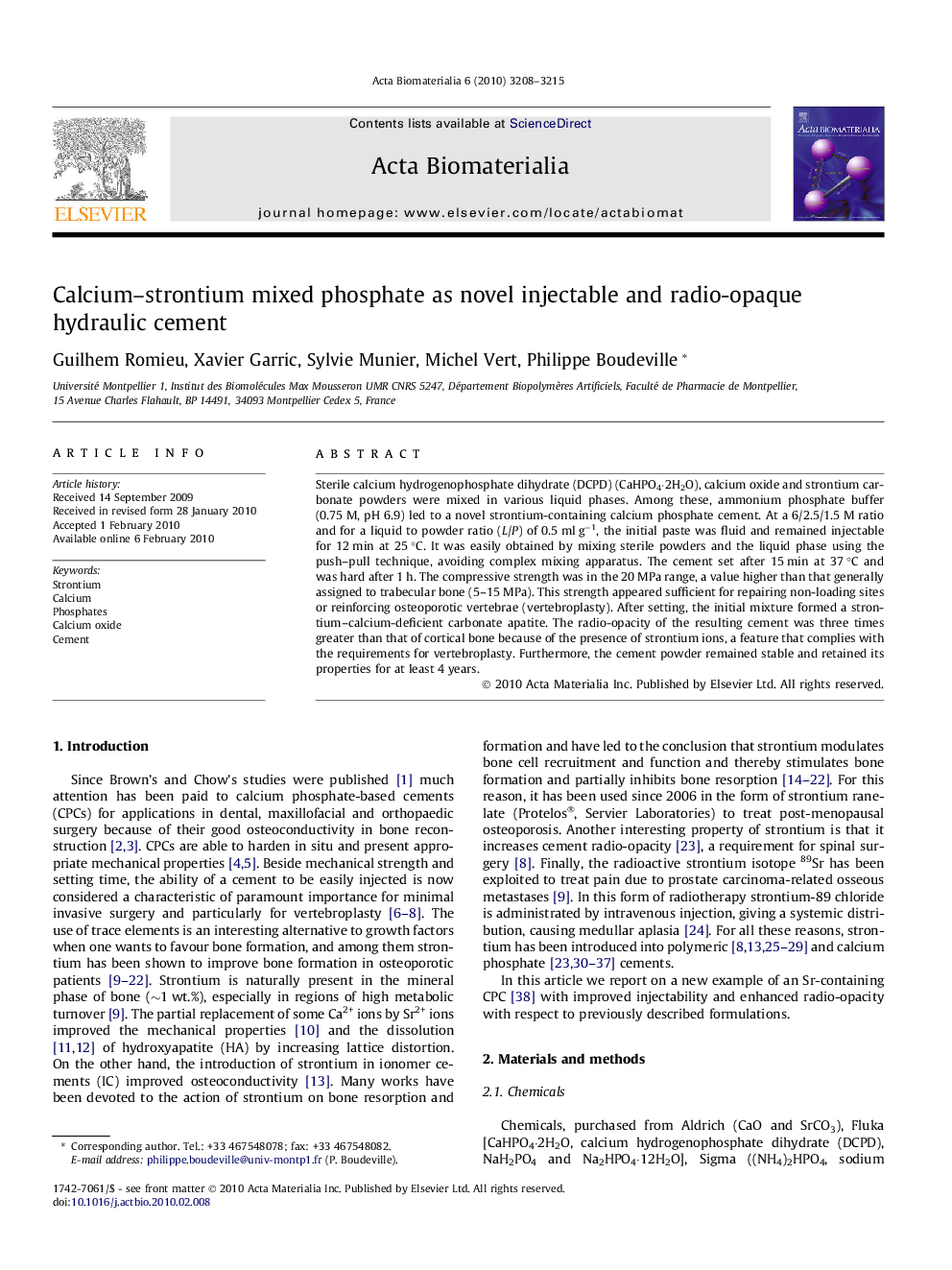| Article ID | Journal | Published Year | Pages | File Type |
|---|---|---|---|---|
| 2286 | Acta Biomaterialia | 2010 | 8 Pages |
Sterile calcium hydrogenophosphate dihydrate (DCPD) (CaHPO4·2H2O), calcium oxide and strontium carbonate powders were mixed in various liquid phases. Among these, ammonium phosphate buffer (0.75 M, pH 6.9) led to a novel strontium-containing calcium phosphate cement. At a 6/2.5/1.5 M ratio and for a liquid to powder ratio (L/P) of 0.5 ml g−1, the initial paste was fluid and remained injectable for 12 min at 25 °C. It was easily obtained by mixing sterile powders and the liquid phase using the push–pull technique, avoiding complex mixing apparatus. The cement set after 15 min at 37 °C and was hard after 1 h. The compressive strength was in the 20 MPa range, a value higher than that generally assigned to trabecular bone (5–15 MPa). This strength appeared sufficient for repairing non-loading sites or reinforcing osteoporotic vertebrae (vertebroplasty). After setting, the initial mixture formed a strontium–calcium-deficient carbonate apatite. The radio-opacity of the resulting cement was three times greater than that of cortical bone because of the presence of strontium ions, a feature that complies with the requirements for vertebroplasty. Furthermore, the cement powder remained stable and retained its properties for at least 4 years.
